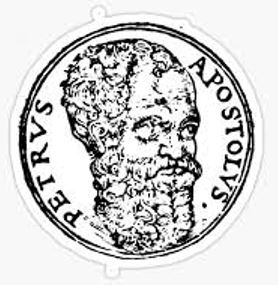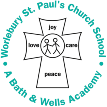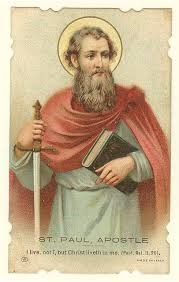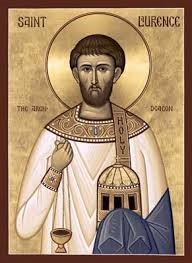Our Religious Education Curriculum
We follow the locally agreed syllabus for North Somerset for the teaching of Religious Education, ‘Awareness, Mystery, Value’, and embrace their vision which aligns with our own. That being that the children at Worlebury St. Paul’s gain,
‘A deep awareness of their own and others’ identities; they wrestle with the mysteries of life and the answers given by a wide variety of religions and beliefs; they develop a clear sense of what is of real value in world today. They gain a deep knowledge and understanding of the teachings, practices and life stories expressed in a variety of ways within many different worldviews, including those of traditions represented in the area. Through reflection on their own beliefs and values in the light of their learning, they grow in respect for themselves and others. They encounter the transformative power of worldviews in people’s lives – in our area, in the UK and in the wider world. They demonstrate curiosity about people of faith and commitment who have changed individual lives, society and culture. Through RE, they feel compelled to imagine and contribute to the creation of a better world for all.’
At Worlebury Primary, the AMV Religious Education Curriculum is structured throughout the year around our six core values of Love, Community, Courage, Care, Peace and Joy and spirals throughout the school alongside learning from and about the saints linked with our school. We also aim to deliver this curriculum within the geographical and social context of our school and enrich our children's RE learning with real-life opportunities, visits, visitors and the use of technology.
Geographical context: Worlebury Primary is set near Worlebury Woods, the parish church of St.Paul’s and overlooks Sand Bay and the sea; – these places are in walking distance for first hand experiences and places that many children may have been with their families.
|
|
 |
|
Social/religious context: Christianity is the main religion in Weston-super-Mare with 55% of the population identifying themselves as Christian. 30% of the population state that they do not have a religion. The largest percentage of other faiths is Muslim with 0.7% of the population; there is a very small percentage who are Hindu, Jewish, Sikh, Buddhist and ‘other’. Our nearest city of Bristol has a similar make-up of religions, although being larger gives us more opportunity to visit and experience religious buildings and people of other faiths. Our intent is to broaden our children’s outlook and deepen their thinking about their own values and beliefs as well as those of others by offering diverse and rich teaching and experiences of all faiths.
|
Saint Paul
Saint Paul is often considered to be the most important person after Jesus in the history of Christianity. His epistles (letters) have had enormous influence on Christian theology, especially on the relationship between God the Father and Jesus, and on the mystical human relationship with the divine. Paul, commonly known as Paul the Apostle and Saint Paul, was a Christian apostle who spread the teachings of Jesus in the first-century world. |
Saint Lawrence
Saint Lawrence or Laurence was one of the seven deacons of the city of Rome under Pope Sixtus II who were martyred in the persecution of the Christians that the Roman Emperor Valerian ordered in 258. He was in charge of giving help to the poor and the needy. St. Lawrence is among the saints mentioned in the First Eucharistic Prayer at Mass. He is the patron saint of school children, poor people, cooks and comedians to name but a few. |
|
Our context – religious: our school is named after St. Paul and linked with St. Paul’s Church of Kewstoke and St. Lawrence Church in Wick (both part of the new Benefice by the Sea). Our school vicar, Rev Gail Thomas, is the shared vicar of St. Paul’s and St. Lawrence Church. |
|

WORLEBURY RELIGIOUS EDUCATION CURRICULUM OVERVIEW>
SAINT PAUL AND SAINT LAWRENCE CURRICULUM LEARNING>


 St Paul 's
St Paul 's


